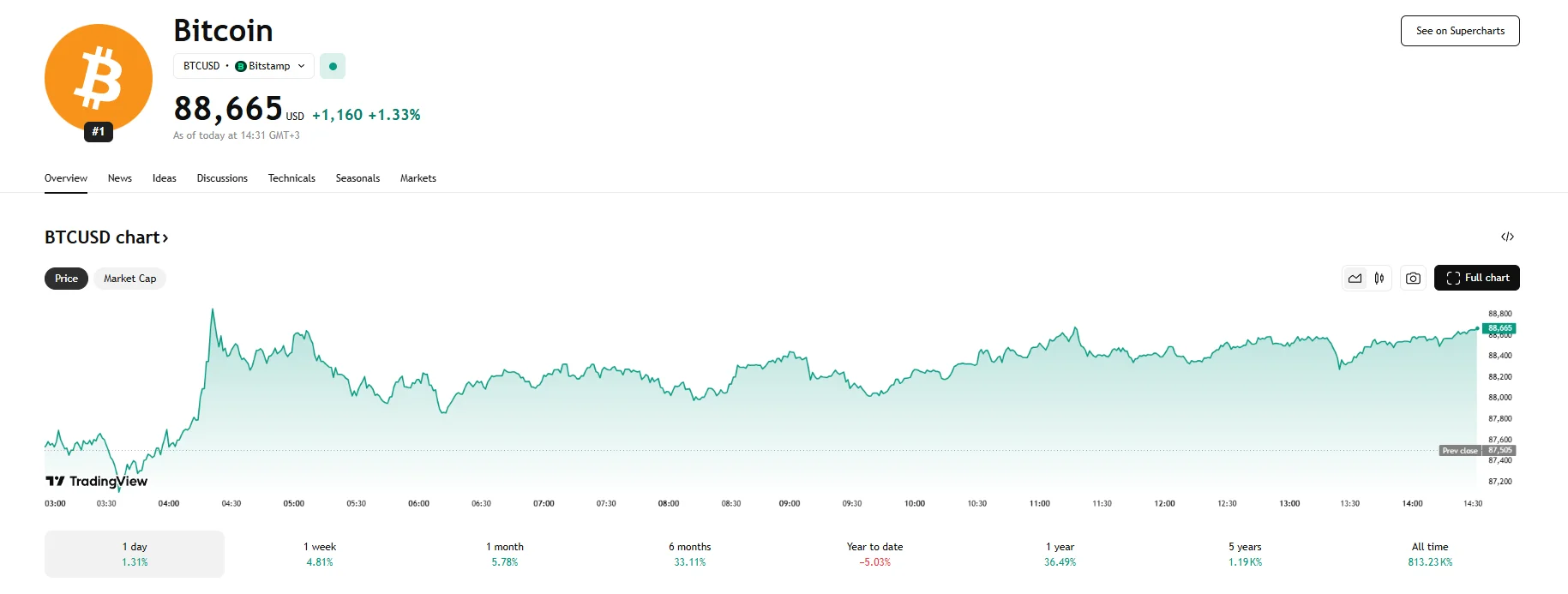Key moments
- Bitcoin surpassed the $88,600 level on Tuesday.
- US Bitcoin ETFs started off the week with substantial inflows of $381 million.
- A struggling US dollar contributed to Bitcoin’s appeal.
Bitcoin ETFs Record Largest Inflow Since January as Institutional Appetite Returns
Bitcoin’s annoyed upward trajectory on Tuesday, with the leading cryptocurrency breaching the $88,600 mark, buoyed by significant investment inflows and a weakening US dollar. This surge saw Bitcoin’s price climb by a notable 1.33% to reach $88,665, marking a continuation of Monday’s bullish momentum. Earlier in the day, the digital asset touched a six-week high of $88,800.
This impressive price action comes on the heels of a substantial influx of capital into Bitcoin exchange-traded funds (ETFs). Data revealed that on Monday alone, these US-based spot Bitcoin ETFs recorded a remarkable net inflow of $381 million. This influx represents the largest single-day investment since late January, highlighting a significant shift in institutional sentiment towards Bitcoin, particularly as traditional financial markets faced headwinds.
Leading the charge in ETF inflows was 21Shares’ ARKB, which attracted a significant $116.1 million on Monday. Fidelity’s FBTC ranked second with $87.6 million in inflows. Bitwise’s BITB also grew, reporting inflows of $45.1 million. Furthermore, BlackRock’s IBIT saw a healthy inflow of $41.6 million. This broad-based interest across various ETF providers indicates a widespread increase in institutional demand for Bitcoin exposure.
The surge in Bitcoin’s price and the robust ETF inflows coincided with a period of pronounced weakness in the US dollar. The greenback recently hit a three-year low amid political tensions between President Trump and Federal Reserve Chair Jerome Powell. As Trump questioned Powell’s policies and renewed calls for aggressive rate cuts, investors increasingly turned to alternative assets like Bitcoin, which is often viewed as a compelling option for diversification during periods of dollar weakness when investors seek to reduce their exposure to the US dollar.





